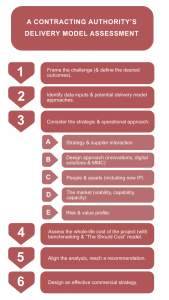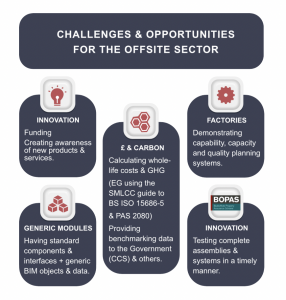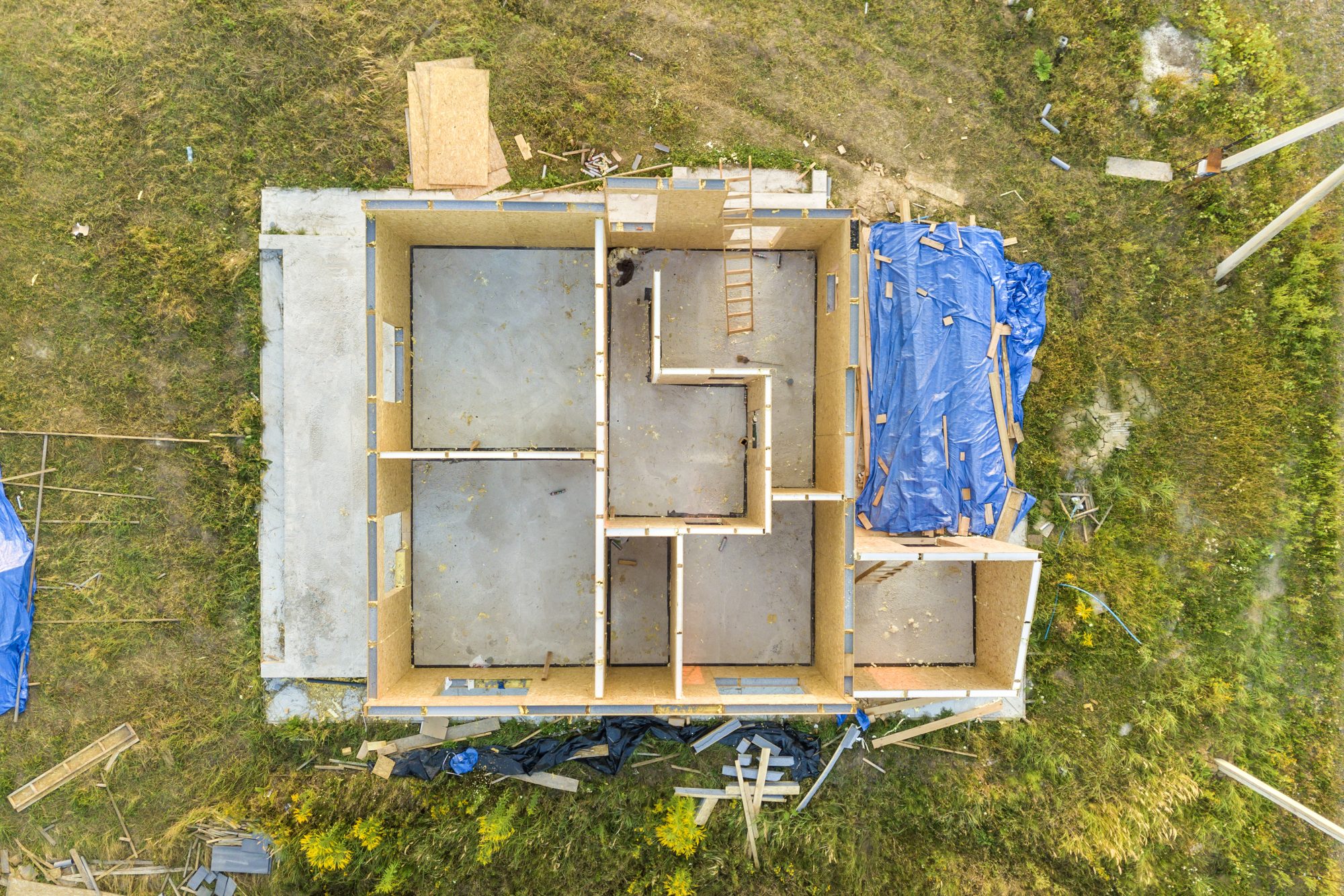The Offsite sector has the opportunity to lead the way in meeting the government’s ambitious plans and policies established in the Construction Playbook, and in this response, Buildoffsite seek to explore how
“Building on the presumption in favour of offsite construction, we are committed to creating a dynamic market for innovative technologies in the UK,” declares The Construction Playbook as it sets out the building blocks and criteria that will drive the future of public sector construction contracts through improved health, safety and wellbeing, greater efficiency, greener development and portfolio-wide approaches.
Health and safety is the over-riding consideration. Here offsite has a demonstrated advantage. We need to continue to show leadership in this area.
The 14 policies in the Playbook should result in:
- More whole-life, outcome-based specifications.
- Long term contracts.
- Greater use of standard designs, components and interfaces.
- More innovation and use of MMC.
- Greater exploitation of digital twins and collaboration tools.
- Increased speed of project delivery.
These should all help the offsite sector grow. However, it is likely to involve a paradigm shift encouraging a move away from proprietary products towards more standardisation and interoperability, so that it is possible to demonstrate healthy competition and capacity in the market in the design stages before contractor appointment.
Whole-life carbon and cost factors are going to be much more significant. Collaborative behaviours more valued, financial resilience of suppliers tested and failure (resolution) planning a common requirement.
Contracting authorities are to collaborate, share standards and, where possible, aggregate demand. They will engage with all tiers in supply chains. There will be a significant shift from business as usual in the past. Some large private sector clients have been driving some of these concepts but the Playbook brings them together in the context of an annual spend approaching half of the UK’s construction market.
Increasing efficiency: Cost
The more an offsite solution may be used, for example by deploying the same technology or manufacturing requirements across a portfolio of projects, cumulative production volumes grow, allowing for greater economies of scale. Use of offsite therefore has the potential to improve cost efficiencies as the public sector increasingly looks for portfolio-wide solutions.
The Buildoffsite Water Hub has demonstrated several building types for which cumulative production volumes have enabled suppliers to reduce the costs of production as they progress down the learning curve. This is typical in a product-based market. The Water Hub continues to develop standards in this area. It is currently working on a generic specification for chemical dosing kiosks.
The benefits of a portfolio approach have been demonstrated by the Ministry of Justice with continuous improvement across successive projects for prison accommodation. Case studies from airport related projects have shown this too.
We need to work out where and how we can facilitate the move toward interoperable products. The Government shall be publishing its purchasing pipeline, which should help enable a market analysis of the opportunities.
Time efficiency
By standardising components and ensuring that relevant parties are aware of offsite capabilities from the outset of a project, design for manufacture and MMC may be more efficiently utilised.
Technologies can be included in designs from the beginning, rather than requiring expensive redesigns further down the line. The Playbook identifies the importance of this approach, explaining that:
“We need to bring together people from across different functions to create teams with the right expertise. This approach to ‘front end loading’ will improve the potential for successful outcomes.”
The offsite sector can facilitate this by resourcing teams effectively and engaging with contractors and contracting authorities from the early stages of the design phase. They should also familiarise themselves with the IT platforms contracting authorities use for collaborative working. This ensures the contracting authority and supply chain are aware of offsite technologies, their benefits, interfaces, scheduling, payment implications and risks.
BIM objects and COBIE data should be made available in appropriate formats to assist this (including Industry Foundation Class (IFC)), and the offsite sector should provide data on standard products and their configurations, for example geometry, specifications, certifications/accreditations, in-life data capture and management, and embedded carbon. It is important to recognise that these need to be provided in both generic form for the early stages of a project (for example, up to RIBA stage 3) as well as company specific information for later stages. The Playbook emphasises the need to ensure that there is good scope for competition in the market.
The requirement for competition suggests there will be a need for the development and adoption of industry standards to provide more interoperability of modular systems if such are to be assumed in the early stages of design.
Reducing waste
Throughout the Construction Playbook, there is a continued focus on greener solutions for public sector construction works. Reducing waste is a clear way to meet this aim. It recognises that offsite construction allows for the precise manufacture of components to specific tolerances for an exact fit, delivered to site just in time, all of which improves efficiency and reduces waste.

Managing risks: Site safety
Offsite components can be delivered to site using just in time scheduling, with the potential to reduce both time and contractors on site, as well as reducing the impact other variables may have on the safety and efficiency of a project, like the weather. With components created in factories in carefully controlled environments to carefully timed workflows, offsite presents the opportunity to reduce hazards and improve workplace safety on construction sites with manufacturing-led solutions.
Project risk
The Playbook identifies that ‘risks should be managed by those best able to bear and manage them’.
Risk allocation schedules could be proposed to indicate what would be typical and appropriate for different risk factors. A good understanding of risks related to offsite and related onsite interfaces would benefit users. There is scope for the sector to develop checklists and document best practice for those who have little experience of managing projects with significant offsite content.
Building for lifetimes
The scope of The Construction Playbook rightly extends beyond completion of a project to consider whole-life performance and costs. The offsite sector should consider the need to include in contracts provisions to ensure that any ongoing monitoring and control is maintained as designed and that any subsequent facilities/property management contracts include such provisions in their scope (possibly requiring a sub-contract service for some specialised aspects). This should form part of the “Soft Landings” process.

How the Offsite sector can respond to the Construction Playbook:
- Apply the principles, policies and value-based procurement within companies and their supply chains.
- Have strategies for innovating to deliver net zero by 2050 or earlier, improve safety and increasing manufactured content.
- Adopt the UK BIM Framework, automated and quality planning processes.
- Invest in skills, people and innovation.
- Be ready to provide data on generic and proprietary standard products, interfaces and tolerances in machine readable form to facilitate early adoption and supply chain involvement.
- Document quality achievements over time (for example, improving sigma values for faults reduction) and help provide benchmarking information demonstrating continuous improvement.
- Be ready to supply suitably trained and experienced personnel to work collaboratively with the contracting authority.
- Familiarise contractors and contracting authorities with offsite technologies, benefits, risks and capabilities to increase uptake of offsite and low carbon manufacturing-led solutions.
- Key potential suppliers need to be ready to provide financial and other information required to demonstrate resilience. This may involve using approaches such as escrow services to ensure longer term support, where this is a requirement.
- Showcase offsite solutions to improve understanding and awareness of offsite capabilities through case studies, events and websites.
The Construction Playbook includes many points which the offsite community has been demonstrating or asking for greater consideration of. It is now time for us to meet the challenges within it and make the most of this opportunity. This could and should lead to significant growth in the sector.
In the meantime, marketing departments need to develop robust benchmarking information, be ready to identify preliminary market consultations and invitations for novel solutions, and be prepared to respond with offsite systems, with associated whole-life cost and carbon assessments.
If we want MMC to become the default choice for early project stages we must enable designers to create generic models that enable competition when contractors are appointed and demonstrate that there is competition and capacity in the sector.
Content from Buildoffsite ‘An Offsite sector response to the Government’s Construction Playbook‘ ebook.

















